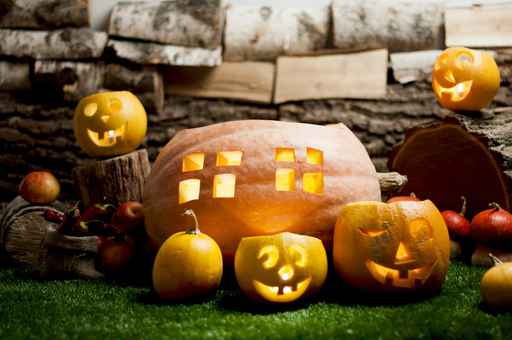 Courtesy of iii.org
Courtesy of iii.org
My five-year-old nephew, Ben, is a great source of pride to his electrician father, Dan. Last Halloween, Ben refused to trick-or-treat at a particular house because he noticed that the decorations there were a fire hazard.
Halloween is supposed to be fun, but it has always involved risks and potential liabilities. The video below outlines some of the “traditional” hazards and ways to mitigate them, from eliminating trip-and-fall dangers to preventing fire and pet-related perils.
And while much of the focus of Halloween-risk mitigation is on the home, Donald R. Grady, a Boston personal injury attorney, says the biggest dangers actually involve cars.
“You see an uptick in automobile accidents,” Grady says. “Especially with teenagers, who don’t have adults with them and who rush from house to house.”
The curse of 2020
 2020 has aged us all….
2020 has aged us all….Perhaps predictably by now, 2020 has brought the spooky holiday threats of its own. COVID-19 has introduced new Halloween concerns.
The Centers for Disease Control and Prevention (CDC) has published a list of low-, moderate-, and high-risk Halloween activities for a time of pandemic.
Lower-risk activities include:
- Carving or decorating pumpkins with members of your household and displaying them
- Carving or decorating pumpkins outside, at a safe distance, with neighbors or friends
- Decorating your house, apartment, or living space
- Having a virtual Halloween costume contest
- Having a Halloween movie night with people you live with.
Moderate-risk activities include:
- Participating in one-way trick-or-treating, where individually wrapped goodie bags are lined up for families to grab and go while continuing to social distance
- Having a small group, outdoor, open-air costume parade with people distanced more than 6 feet apart
- Attending a costume party held outdoors, where protective masks are used and people can remain more than 6 feet apart.
The CDC provides caveats and additional guidance for these and other moderate-risk activities, so if you’re even thinking about them, definitely read the relevant guidance. It advises against the following:
- Traditional trick-or-treating where treats are handed to children who go door to door
- “Trunk-or-treat,” where treats are handed out from trunks of cars lined up in large parking lots
- Attending crowded costume parties held indoors
- Going to an indoor haunted house where people may be crowded together and screaming
- Going on hayrides or tractor rides with people who are not in your household
- Using alcohol or drugs, which can cloud judgement and increase risky behaviors
- Traveling to a rural fall festival that is not in your community if you live in an area with community spread of COVID-19.




